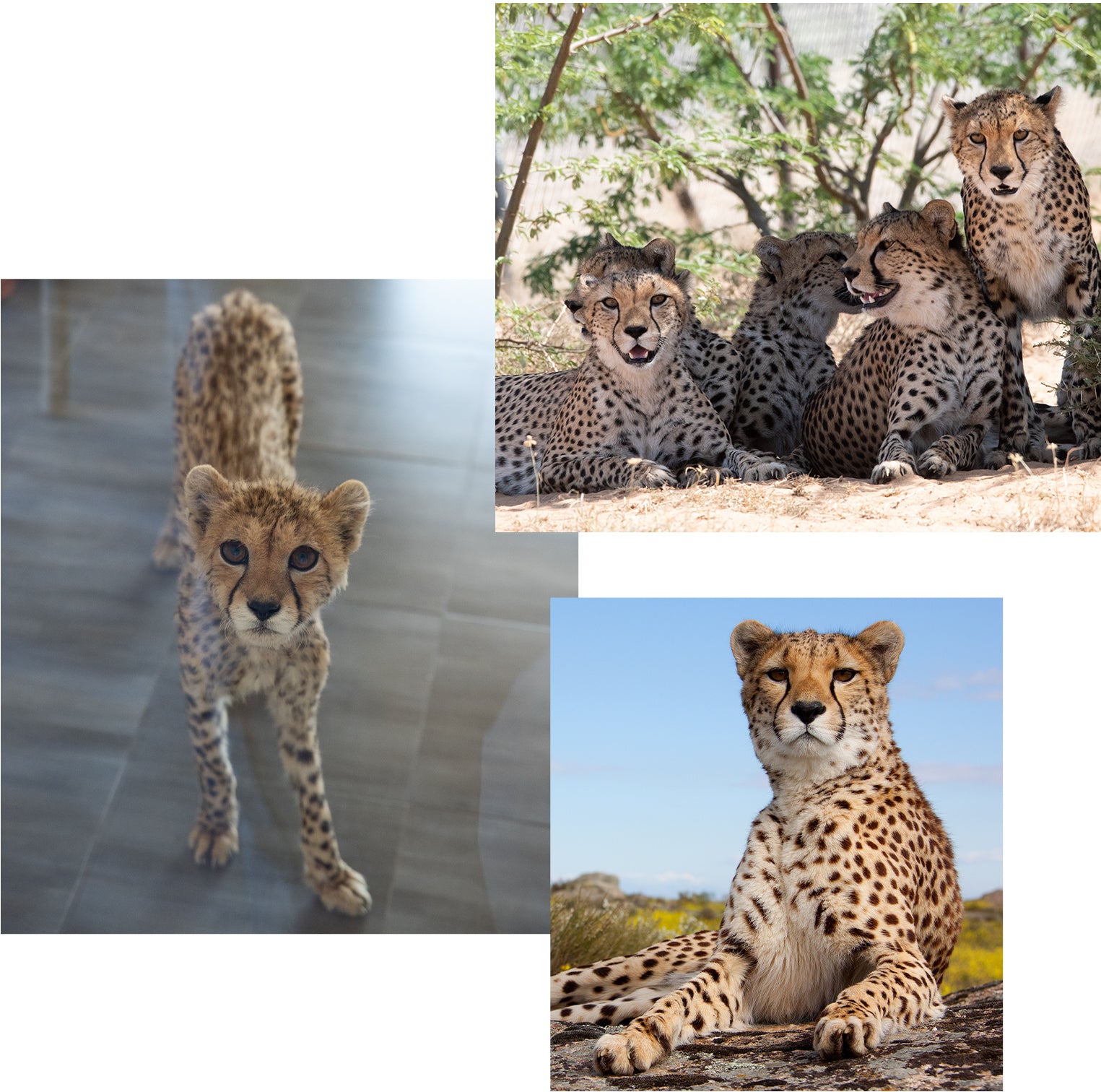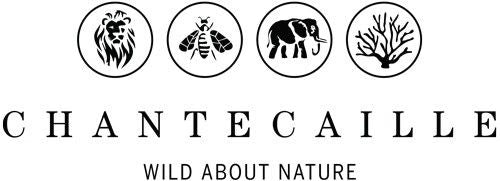Behind the cause
The wild cheetah is the fastest land animal on earth, capable of reaching speeds of up to 70 mph, thanks to their streamlined bodies and powerful legs. Once found throughout Africa, India and the Middle East, these big cats face numerous threats, including habitat loss, conflict with humans and the illegal wildlife trade. Roughly 90% of the world’s cheetah population has been lost over the last century.
The Cheetah Conservation Fund, founded in 1990 by Dr. Laurie Marker and based in Namibia, is a non-profit working uniquely to protect cheetahs in the wild in Africa—predators who play an important role in the food chain—with initiatives that tackle these threats head-on.
The illegal wildlife trade is a serious issue for the cheetah population. In the Horn of Africa in particular, wild cheetah mothers are chased off or killed and their cubs stolen to be trafficked internationally and kept as pets. Only 1 in 5 of these cubs make it to their destination alive.
CCF has developed a Cheetah Rescue and Conservation Centre in
Somaliland, where they care for and rehabilitate these confiscated cheetahs. Since 2018, CCF has helped more than 150 cubs and currently cares for about 100 cats at their center. These hand-raised cubs typically cannot be returned to the wild and most will require care for the rest of their lives. The nonprofit will soon begin work on a 50,000-hectare reserve to expand the cheetahs’ habitat and give them room to live more natural, wild lives.
Chantecaille’s donation will support CCF’s efforts to provide 24/7 care
for the rescued cubs, including providing proper nutrition, parasite control, and medications, as well as a new education center to build awareness among local communities about methods for peaceful coexistence and the importance of leaving wild cheetahs in the wild.
We are proud to partner with Cheetah Conservation Fund in support of their cheetah research, rescue and rehabilitation programs.
Cheetah Facts
- Cheetahs can reach incredible bursts of up to 70 mph, thanks to their streamlined bodies and powerful legs.
- Each cheetah's coat is adorned with a unique pattern of black spots that are like fingerprints, identifying each cheetah. Cheetahs have “true spots,” meaning their skin is also spotted. There are over 2,000 spots on a cheetah, most of them found on their head!
- The dark "tear marks" (also called malar stripes) streaming down their faces act as sunglasses to reduce glare and enhance focus, aiding vision during hunts.
- Their long, muscular tails act as aerodynamic rudders, providing crucial balance and stability during high-speed chases.
- Cheetahs don’t roar, but they purr, chirp, and meow, using a wide vocal range that reflects their social nature.
- While often portrayed as solitary hunters, cheetahs, particularly females, can form strong social bonds, raising their young cooperatively and engaging in playful interactions. Male cheetahs, however, form “coalitions,” mostly made of littermate brothers, and will live and hunt together for the rest of their lives.
– Cheetahs cannot retract their claws completely like other cats, leaving them out at all times. This means their claws are usually dull, like a dog’s, and therefore they are not very good at climbing. These claws act as “football cleats” to give them traction on the ground as they run at intense speeds.
– Cheetahs have large nasal passages, heart, and lungs to help them not overheat while running! A fast engine also needs a great cooling system.









